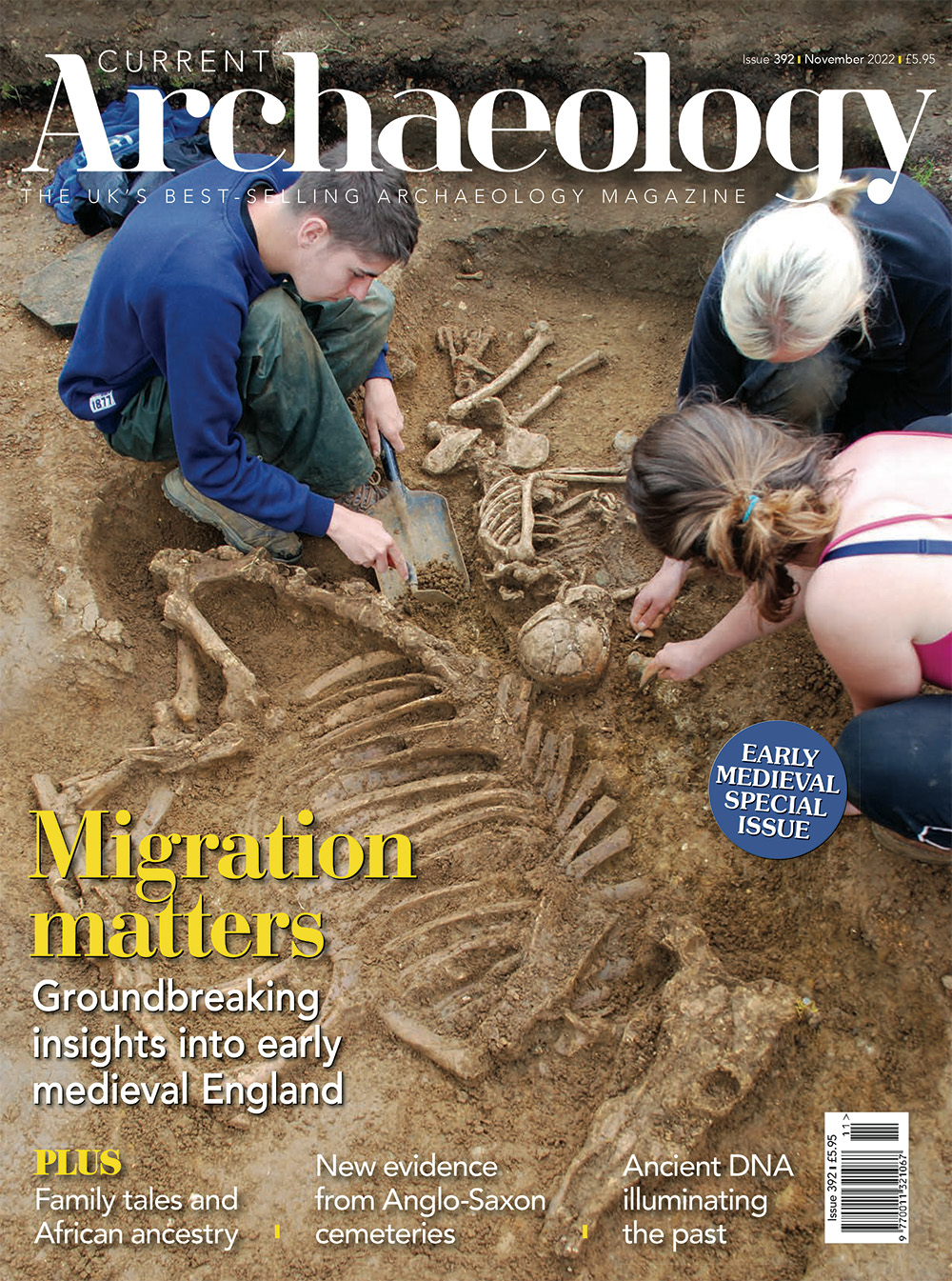This month’s CA looks a little different, as it is a ‘special issue’ delving into illuminating new research centred on early medieval England.
Originally published in Nature, the project in question highlights how genetic data can shed light on matters including migration, integration, family histories, and burial customs within different communities in the immediate post-Roman period. When exploring questions of ancestry, it is important to do so in a nuanced and self-aware manner, and our intention with this special issue is to highlight the human stories that can now be discerned from cemetery populations, from otherwise invisible family relationships to intrepid journeys undertaken centuries ago. There are fascinating insights and individual stories to share, from the woman (featured on the cover) who was laid to rest beside a cow at Oakington, Cambridgeshire, to a young girl with West African ancestry who was buried in early 7th-century Kent.
Professor Duncan Sayer sets out the project’s main themes on p.18, so I will not repeat his summary here. Instead, I will end with a quick note on terminology. As a historical descriptor, ‘Anglo-Saxon’ has been the subject of academic debate in recent years. While it remains a commonly used popular shorthand for the early medieval period in England, and for the people who lived there, its appropriateness has come under scrutiny as, in some contexts, it has been co-opted for less savoury purposes. In acknowledging this, I want to emphasise that, where used in this issue, ‘Anglo-Saxon’ is intended to refer to the kingdoms of early medieval England, rather than to specific ideas of identity or ethnicity.

